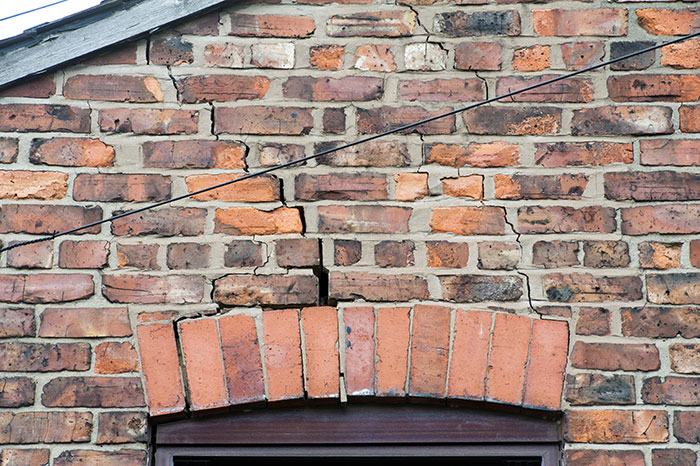For homeowners, subsidence is a term that can trigger concern. Not only does it affect the stability and safety of your property, but it can also lead to significant repair costs if not addressed promptly. This article will explore what subsidence is, its causes, how to identify signs of it, and the modern solutions available to fix it.

What is Subsidence?
Subsidence refers to the downward movement of a building’s foundations. As a result, it causes the ground underneath the foundations to sink and subsequently become unstable. This can cause issues with the structural integrity of your home, leading to visible damage and potential safety risks. This is just one of the reasons as to why you need to seek subsidence solutions as soon as possible by way of underpinning from Geobear.
What Causes Subsidence?
Subsidence typically occurs when the soil beneath a property loses moisture and shrinks. As a result of the shrinkage and compaction in wet weather, and the expansion and swelling in dry weather, it can cause the foundations beneath the property to shift. You might be wondering what it is that causes subsidence to occur, so that you can try to prevent the issue from occurring in the first place. Several factors can contribute to this phenomenon, including the following:
- Shrinking Soil: Certain types of soil, such as clay, are more susceptible to shrinking as they lose moisture
- Previous Mining Activity: If your property is built on land previously used for mining, the ground may be less stable
- Ground Vibrations: These can be caused by construction work or natural seismic activity, affecting the stability of the ground
- Trees and Large Shrubs Planted Too Close: The roots of trees and shrubs can withdraw moisture from the soil, causing it to shrink and compact, regardless of whether it’s clay or a different soil type
- Leaking Pipes and Drains: Pipes, drains and gutters that leak or expel water, continuously into the ground can cause the soil to move under its own weight, therefore causing subsidence to occur
How to Spot the Signs of Subsidence
Spotting subsidence early can save you a lot of stress and money and they can present themselves in many different ways. While one sign on its own might not point to subsidence, a combination of one of the following might mean that more sinister issues are at play – subsidence. If you aren’t sure, then ask a professional to help you. Here at Geobear, we are able to carry out subsidence surveys and investigations. This way, we will be able to confirm or deny instances of subsidence, putting your mind at ease. However, there are some signs to spot in the meantime, both inside and outside of your home, including:
- Cracks: Look for cracks in walls, ceilings and external brickwork that run in a zig-zag pattern and that you can fit your little finger into. Pay attention to any existing cracks that seem to be widening or new ones that appear after dry weather
- Wallpaper Ripples: Rippling wallpaper not caused by dampness can indicate movement in the structure
- Sticking Doors and Windows: If doors or windows suddenly start sticking, this could be because your property’s foundations are shifting
- Extensions Coming Away from the Rest of the House: If your extension or conservatory is starting to come away from the rest of the house, then this could indicate subsidence
- Dips in Driveways, Patios and Garden Paths – if you notice outdoor spaces starting to sag, then this could be a sign that subsidence is at play
How to Fix Subsidence: Innovative Underpinning Technology from Geobear
There are a few ways in which subsidence can be rectified, such as underpinning. While there are more conventional methods of underpinning, including excavation (which can be disruptive and messy), fortunately, advancements in technology have provided innovative solutions to address subsidence with minimum disruption. One such method is non-disruptive underpinning technology, specifically the resin injection method developed by Geobear. Let’s take a closer look at how the resin injection method from Geobear is the right solution for you, should you have subsidence:
How Does It Work?
- Geopolymer Resin Injection: Small holes are drilled into the ground, and a geopolymer resin is injected. This resin expands to fill voids and compact weakened soil
- Minimal Disruption: Unlike traditional underpinning methods that require extensive excavation, this method is much less invasive, causing minimal disturbance to your property
- Stabilisation and Lifting: The resin’s expansion stabilises the ground, and where necessary, it can help lift the foundation back to its original position
This modern solution ensures that all gaps in the ground are addressed, providing a stable base for your home without the need for prolonged construction work. Understanding subsidence and acting quickly when signs appear can safeguard your property from severe damage. By using advanced methods like resin injection, you can ensure that your home remains secure and habitable for years to come.
If you would like further information about the resin injection underpinning solution from Geobear, then get in touch with a member of our friendly, knowledgeable team today – we’re always pleased to hear from you.
This article is published by Ultimate Home Improvement blog uk




